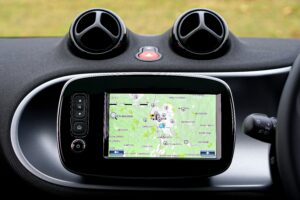In a digital-first world, connectivity is everything. As vehicles become connected at scale, automotive manufacturers have an opportunity to leverage a number of new innovations such as 5G and IoT. In this piece Tata Communications’ Saurabh Ohri, Head of Connected Automotive Solutions, explores technology’s role in shaping the future of the automotive industry.
Connected vehicles – the path forward
With continuous developments in connected vehicle ecosystems, the proliferation of electric vehicles, and the technological shift towards autonomous vehicles, the automotive sector is on the precipice of innovation and widespread  change. Manufacturers are building new products and launching new services with the aim to enhance the driving experience of their customers. Needless to say, internet of things (IoT) will be at the centre of all this to enable this technology shift.
change. Manufacturers are building new products and launching new services with the aim to enhance the driving experience of their customers. Needless to say, internet of things (IoT) will be at the centre of all this to enable this technology shift.
“A connected vehicle can completely change how we interact with our vehicles and the way they communicate with the world around them.”
However, it’s not as easy as it sounds. Firstly, as more vehicles become connected on a global scale, automotive manufacturers will need to partner with digital experts and multiple connectivity providers with global reach and infrastructure capabilities.
However, in this multi-supplier environment, it becomes critical that automotive manufactures implement the right platforms and solutions to ensure that they have a unified interface to provide them control and monitoring capabilities for multiple mobile network operators.
 Secondly, as software becomes a key element of connected vehicles, automobile manufacturers need to ensure a robust infrastructure for Software Over the Air (SOTA) updates. This remains to be a critical operational procedure for connected vehicles to guarantee that latest features are updated for the vehicle software.
Secondly, as software becomes a key element of connected vehicles, automobile manufacturers need to ensure a robust infrastructure for Software Over the Air (SOTA) updates. This remains to be a critical operational procedure for connected vehicles to guarantee that latest features are updated for the vehicle software.
Thirdly, the much-anticipated arrival of 5G technology will certainly be essential in facilitating new services such as private networks, streaming of high-definition maps and collaborations with Over-the-Top (OTT) players for content streaming. However, this will require automotive manufacturers to not only implement right platforms for enabling these use cases, but also to ensure that these platforms are backward compatible to 4G networks.
Connected… everything?
Connected vehicle platforms will emerge as a key element to the development of vehicle autonomy as a critical enabler to the optimal connectivity coverage, having a unified visibility to the connected vehicle fleet and providing the right insights to execute a SOTA campaign.
“Connectivity will remain central to the development of vehicle autonomy, and without it, manufacturers will not be able to achieve V2X – or ‘vehicle-to-everything’ connectivity – the two-way communication between the vehicle and other devices around it that makes autonomous vehicles truly viable.”
V2X will enable each vehicle to navigate a network of streets full of traffic, pedestrians, and other hazards through constant communication with almost everything it must share the road with.
“This connected IoT device network will soon extend to roadside signage, traffic control systems and other street furniture, and it’s coming faster than anyone expected.”
Last year the UK announced that it is to begin trialling connected infrastructure on its motorways by 2021. 
As more parts of the connected vehicles ecosystem start talking to each other, the advantages for the driver will also expand. From vehicle insurance to entertainment channels – the land of opportunities for vehicle manufacturers is surely going to only open further with the backbone of seamless connectivity.
Discover more about connected vehicles and security of data.

